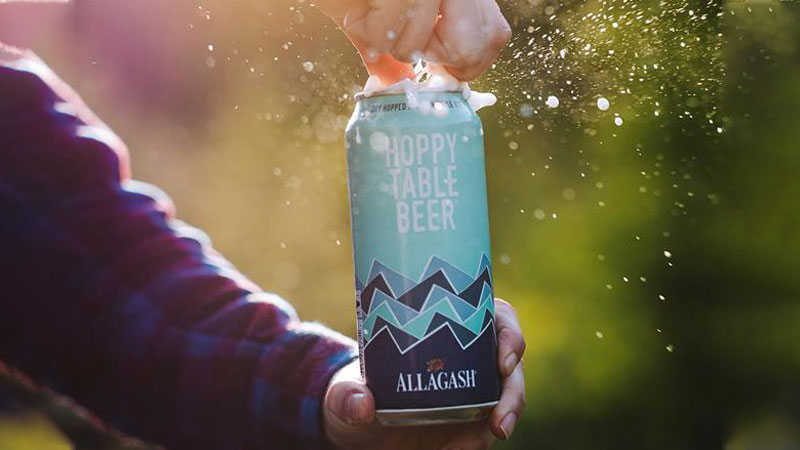In 2016, Kaylyn Kirkpatrick was working as a chemist at New Belgium Brewing when she decided to pursue graduate work in brewing science. She joined the lab of Dr. Thomas Shellhammer at Oregon State University that fall.
World-famous brewers came calling soon thereafter. Kirkpatrick and Shellhammer were approached by Allagash Brewing’s Jason Perkins and Zach Boda for help with a new release, Hoppy Table Beer.
What they discovered was revolutionary for Allagash. It also impacted Russian River, Pfriem Family Brewers, and Melvin Brewing. The scientists’ study revealed the juicy truth about how dry-hopping can change a beer over time, altering its alcohol, sugar, and carbonation levels. In some cases, it can even be dangerous.

For those not currently arguing about its benefits on Reddit, “dry-hopping” is a term used to describe the practice of adding hops to a beer-in-progress during or after fermentation. Brewers refer to this stage as “the cold side.” Adding hops during the cold side imparts their aroma compounds without making the beer more bitter. When you add hops during the boiling portion of brewing, or “the hot side,” bitterness results.
In recent years, dry-hopping has become de rigueur for brewers of all stripes, especially those who produce juicy or hazy IPAs.
Perkins and Boda had come to the Oregon State University lab because they’d noticed that, after bottle-conditioning their Hoppy Table Beer, its carbonation levels were “increasing and increasing,” Kirkpatrick says. “It got to the point where they said, ‘we can’t sell this.’”
The lab began conducting experiments. Their most profound results came when they dosed different iterations of a beer (Coors Banquet, as it turns out) “with hops, hops with yeast, just yeast, and beer by itself, and let that go for 40 days,” Kirkpatrick says. The beer that had hops and yeast dropped 1 degree Plato after five days, and 2 degrees Plato after 40. (Plato is how brewers measure the percent of sugar left in a beer, or its perceived “dryness.”)
In other words, the bottle-conditioned, dry-hopped beer was re-fermenting in the bottle.

Turns out, hops “contain enzymes that are starch-degrading enzymes,” Kirkpatrick says. Malt has these enzymes — they enable brewers to brew beer — “but we didn’t know it was in hops, too,” Kirkpatrick says.
Interestingly, Kirkpatrick says, scientists made a similar discovery in the late 1800s, when the same phenomenon was observed in hopped cask ales. But brewers moved away from this type of fermentation. “Large domestic beer companies making light lagers [are] not using hops in that way,” Kirkpatrick says. “Only in recent years, we started dry-hopping the way we do.”
Of course, this doesn’t mean every dry-hopped beer is a ticking time bomb. Variables from beer style, to type of hops, to time and temperature all affect the probability of re-fermentation.
For example, light lagers are less likely to see this effect than “full-bodied ales, such as IPAs and double IPAs,” Kirkpatrick says. Beers that are dry-hopped with yeast for longer periods at warmer temperatures are also more likely to see the effect.
Overall, Kirkpatrick says, the more a beer is dry-hopped, the greater the chance for enzyme activity that will lead to re-fermentation.
Kirkpatrick believes these findings are less a cautionary tale and more a discovery that speaks to beer’s “delicate nature.”
Hops, widely considered a spice to add flavor or aroma to a beer, are “still living” and can change the flavor and chemical makeup of beer over time, she says. “This changes the way we see this ingredient.”
Her advice regarding “juicy, hazy, unfiltered, dry-hopped” beers? Drink them fresh.
“If you’re at a can release and get the triple IPA, just drink it fast and keep it cold,” she says. “That’d be my advice.”
